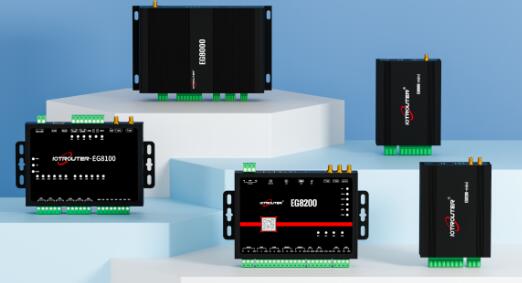With the development of mobile communication technology, people’s production life is slowly changing. 1G and 2G gradually start, 3G realises multimedia information transmission, 4G provides higher data transmission speed and lower latency, supporting more application scenarios, such as HD video, cloud computing, Internet of Things, etc., while 5G goes further on the basis of 4G, providing higher data transmission speed, lower latency and larger network capacity. network capacity to support more application scenarios, such as smart manufacturing, smart healthcare, smart driving and so on.
The 5G Gateway di bordo and 4G Edge Gateway launched by IOTROUTER are both data collection devices for the industrial IoT field, which can realise data collection and transmission of PLC, instrumentation, touch machine tools, industrial robots, etc., and are equipped with functions such as protocol resolution, edge computing, data collection, etc. The difference lies in the fact that the two are compatible with different network functions, and therefore enterprises need to choose the appropriate edge gateway according to their own needs. Therefore, enterprises need to choose the right edge gateway according to their needs.
Network Speed: 5G edge gateway provides higher network speed and larger bandwidth. It can support higher data transfer rates and lower latency, making real-time data transmission and response faster and more reliable.
Capacity And Connection Density: 5G gateway edge support more simultaneous connections of more devices, called high-density connections. In contrast, 4G edge gateways have less connection capacity and naturally do not have the same high data processing power as 5G.
Network Coverage: Currently, 5G base stations are still being gradually rolled out, and the coverage is far less than that of 4G. Therefore, 5G gateways are more suitable for a small number of application scenarios in key areas, whereas 4G can support a much richer range of application scenarios.
Application-specific Support: 5G edge gateway provides more application-specific support. It has higher reliability, stability and security, and can provide better services for applications such as industrial automation, IoT and robotics.
Future Potential: 5G networks have more potential for growth as they will take over from 4G networks as the mainstream in the future. It can adapt to future needs and technological developments, bringing more innovation and opportunities in areas such as industrial automation and smart manufacturing.
